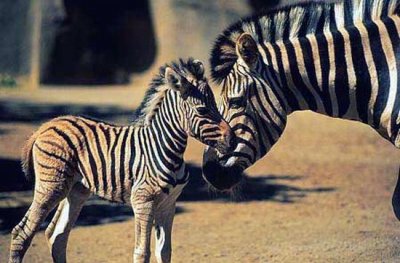Zebra Reproduction
 Unlike other species, zebras have a distinct social habit. They live in family groups consisting of one male and many females due to several reasons.
Unlike other species, zebras have a distinct social habit. They live in family groups consisting of one male and many females due to several reasons.
The male’s ability to reproduce comes at a later age than females. Upon reaching the age of five or six years old, male zebras become sexually active while females start at a bit earlier. At that point, the male in the group can begin mating with the females.
Frequency of Reproducing
The females do not have a certain reproduction habit, but statistics show that the most births are recorded between September and April with a peak being reached in January. However, because they can give birth to a foal every 12 months, the size of a social group can double in just a couple of years if the offspring are predominantly female.
Gestation and Birth
The gestation period for zebra reproduction takes around 12 to 13 months. Similar to horses, the foal will be able to stand up and walk just a few minutes after it is born. In fact, after only 15 minutes, the foal can walk and after one hour, it will be able to run.
In general, females give birth to only one foal, but on rare occasions they can have twins. They will suckle up to 16 months but the nursing will continue even after that period. Only their mothers will protect them since most zebra social groups contain just one male.
Foal Life
The foals are nursed by their mothers until they reach maturity. However, only 50% of them survive their first year as they fall prey to predators. During their first days, the mothers are the most protective with their offspring. This mechanism helps them recognize their mothers easier.
After that period, the mothers will allow their foals to interact with others members of the group. When male foals reach maturity at about 18 months, they usually leave the group to join another or form their own.
